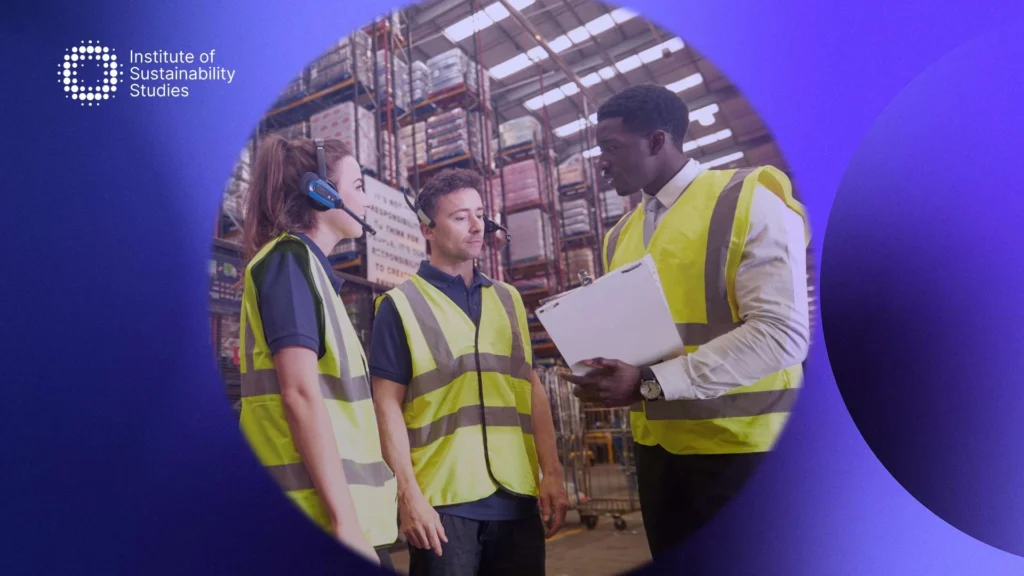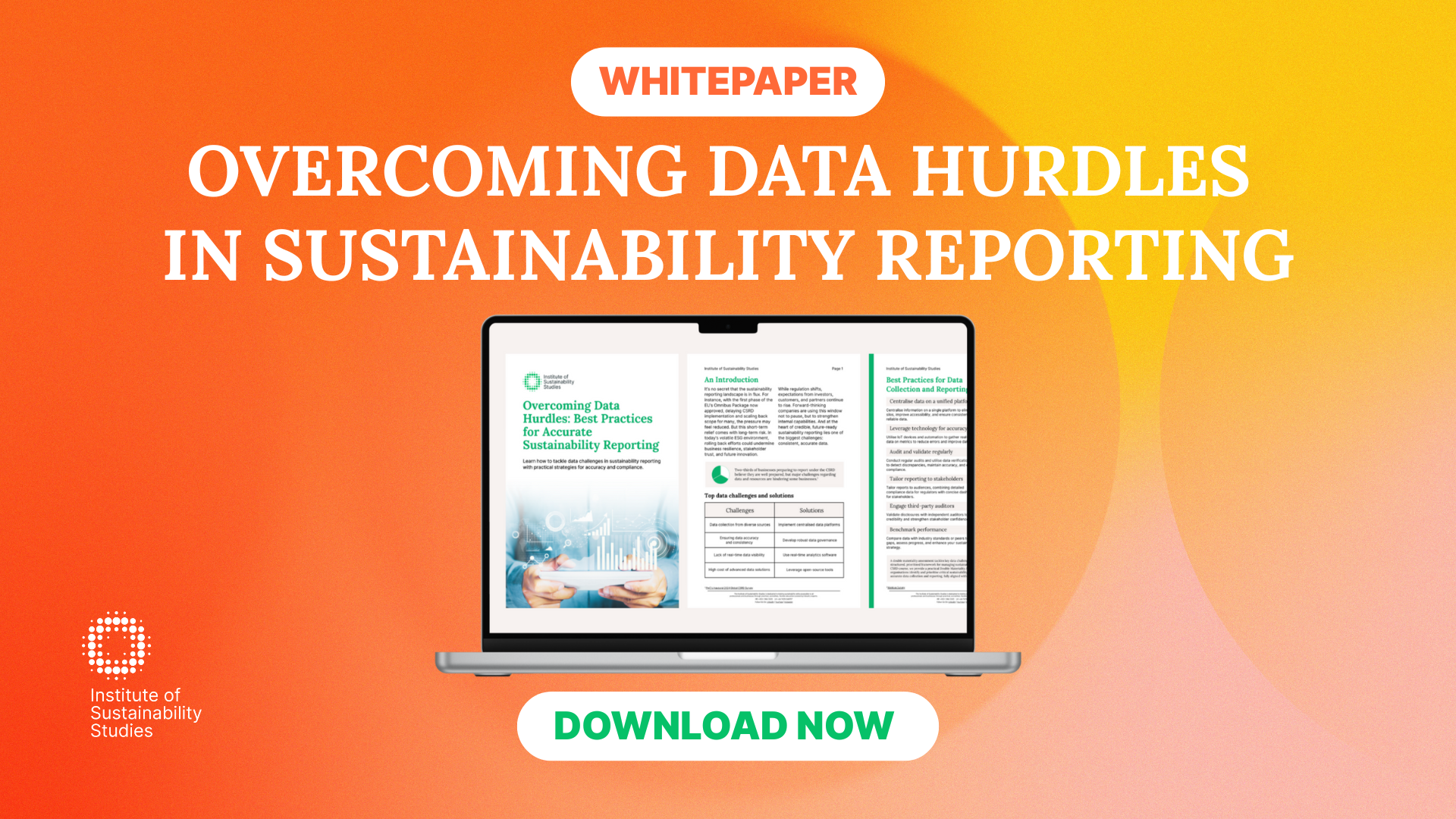A recent CDP study found that, on average, a company’s supply chain emits 11.4 times more greenhouse gases than its direct operations. Yet, while many organisations are setting bold business sustainability strategies, most still lack a clear approach to supplier engagement, despite suppliers being critical to delivering real progress.
Why is this happening? And what makes supplier engagement so complex? In the race to decarbonise, increase transparency, and meet stakeholder expectations, supply chain alignment is becoming critical. However, the path to effective engagement is often riddled with operational, relational, and systemic challenges.
Why supplier engagement matters
Supplier engagement is a strategic priority for businesses looking to achieve measurable sustainability outcomes. It plays a central role in reducing risk, meeting environmental, social, and governance (ESG) targets, and building long-term resilience.
1. Most sustainability impacts occur beyond direct operations
For many organisations, environmental and social impacts, such as Scope 3 emissions, water use, and labour conditions, are concentrated upstream in the supply chain. Engaging suppliers allows companies to address these indirect impacts, measure improvements, and work toward holistic value chain sustainability.
2. It enables progress on ESG targets
Suppliers are essential for delivering on goals like decarbonisation, circular economy adoption, and responsible sourcing. Supplier engagement ensures alignment, improves data quality, and supports transparent ESG reporting and performance tracking.
3. It reduces risk and increases resilience
By understanding supplier practices, businesses can identify operational, compliance, or reputational risks early. Active engagement builds transparency, allows for contingency planning, and supports supply chain diversification and resilience.
4. It drives innovation and shared value creation
Collaborating with suppliers can unlock innovative solutions such as regenerative agriculture, low-carbon materials, and waste-reducing packaging. These partnerships support sustainability goals while boosting competitiveness and product value.
5. It supports long-term credibility and trust
Although regulatory landscapes may shift, expectations from investors, customers, and employees continue to rise. Therefore, demonstrating robust supplier engagement builds brand trust, reinforces authenticity, and positions businesses as proactive sustainability leaders.
Strengthen supplier engagement, cut costs, and reduce waste
with sustainability training tailored for your industry
Common barriers to supplier sustainability alignment
Aligning suppliers with your sustainability goals isn’t always straightforward. Below are some of the most common barriers to achieving supplier alignment on sustainability.
Limited supply chain visibility
Many organisations struggle to see beyond their immediate (Tier 1) suppliers. This lack of visibility makes it difficult to assess ESG risks, track performance, or verify claims across the full value chain, particularly in complex or global networks.
Differing priorities and motivations
Sustainability may be a strategic imperative for the buyer, but not necessarily for the supplier. Without clear incentives or contractual obligations, suppliers may deprioritise ESG alignment in favour of cost, speed, or operational efficiency.
Capacity and capability gaps
Not all suppliers have the resources, expertise, or infrastructure needed to implement sustainability improvements. This is especially true for SMEs or suppliers in regions with limited access to sustainability training, technology, or finance.
Communication and cultural barriers
Misalignment can stem from inconsistent messaging, language differences, or cultural misunderstandings. Without clear and context-sensitive communication, sustainability requirements can be misinterpreted or poorly implemented.
Cost pressures and perceived burden
Sustainability initiatives often require upfront investment, which may be seen as a cost burden by suppliers, particularly in low-margin industries. If buyers are unwilling to share costs or offer longer-term contracts, supplier engagement can weaken.
Lack of standardisation
The absence of unified frameworks for supplier sustainability performance leads to confusion. With various reporting requirements, certifications, and audit tools in play, suppliers may face conflicting demands from different customers.
Transactional supplier relationships
When procurement is driven purely by cost or delivery metrics, there’s little incentive for suppliers to invest in ESG alignment. Building long-term, collaborative partnerships is key to driving meaningful sustainability improvements.
Equip your teams to meet evolving ESG standards with practical, accredited sustainability training solutions
How to engage suppliers more effectively
Effective supplier engagement is about building long-term, collaborative relationships that support shared sustainability goals. Here are key practices that leading organisations use to drive alignment and impact:
Start with clear, credible expectations
Develop a supplier sustainability code or set of ESG guidelines that outlines what you expect, why it matters, and how it will be assessed. Make sure requirements are realistic, sector-relevant, and aligned with globally recognised frameworks.
Prioritise transparency and two-way communication
Engagement is a dialogue, not a directive. In other words, provide clear communication on sustainability priorities, and create regular opportunities for feedback. Moreover, encourage suppliers to share challenges and collaborate on workable solutions.
Build capability through training and resources
Many suppliers, particularly smaller ones, need support to meet sustainability expectations. Offer training sessions, toolkits, templates, or access to expertise that help suppliers build internal ESG capability.
Embed sustainability into sourcing and procurement decisions
Incorporate sustainability criteria into RFPs, supplier evaluations, and ongoing performance reviews. Make ESG performance part of how you assess value, not just cost and delivery.
Recognise and reward progress
Highlight suppliers who demonstrate leadership or improvement in sustainability. Consider incentives such as preferred supplier status, extended contracts, or joint green marketing opportunities for high-performing partners.
Co-invest in solutions
Where appropriate, share the financial or technical burden of sustainability improvements. This could involve co-developing low-carbon technologies, funding pilot projects, or extending payment terms to support ESG-related upgrades.
Leverage technology and data platforms
Use digital platforms to gather, track, and benchmark supplier sustainability data. Tools that enable real-time reporting, self-assessments, or third-party verification can streamline the process and build trust.
Segment suppliers by risk and impact
Not all suppliers need the same level of engagement. Focus resources on those with the highest ESG risk, most material impact, or greatest potential for collaboration. Use segmentation to tailor your engagement strategy.
Foster long-term partnerships
Move beyond transactional relationships. Build multi-year, trust-based partnerships where sustainability is part of the shared value proposition. This lays the foundation for innovation, resilience, and continuous improvement.
Final thoughts
Supplier engagement is proving central to delivering credible sustainability action, managing value chain risks, and unlocking shared value through innovation. Supply chain expectations will only intensify, and regulatory scrutiny may increase as ESG disclosures become more granular and climate risks continue to escalate.
Businesses that take a proactive, partnership-based approach to supplier sustainability will ultimately position themselves for long-term resilience and growth. Our corporate sustainability training solutions are designed to help teams build the internal capability needed to lead sustainability from the source – your suppliers. Explore our suite of products and start working collaboratively across your entire value chain to thrive in tomorrow’s economy.
Dedicated to harnessing the power of storytelling to raise awareness, demystify, and drive behavioural change, Bronagh works as the Communications & Content Manager at the Institute of Sustainability Studies. Alongside her work with ISS, Bronagh contributes articles to several news media publications on sustainability and mental health.
- Bronagh Loughlinhttps://instituteofsustainabilitystudies.com/insights/author/bronagh/
- Bronagh Loughlinhttps://instituteofsustainabilitystudies.com/insights/author/bronagh/
- Bronagh Loughlinhttps://instituteofsustainabilitystudies.com/insights/author/bronagh/
- Bronagh Loughlinhttps://instituteofsustainabilitystudies.com/insights/author/bronagh/









